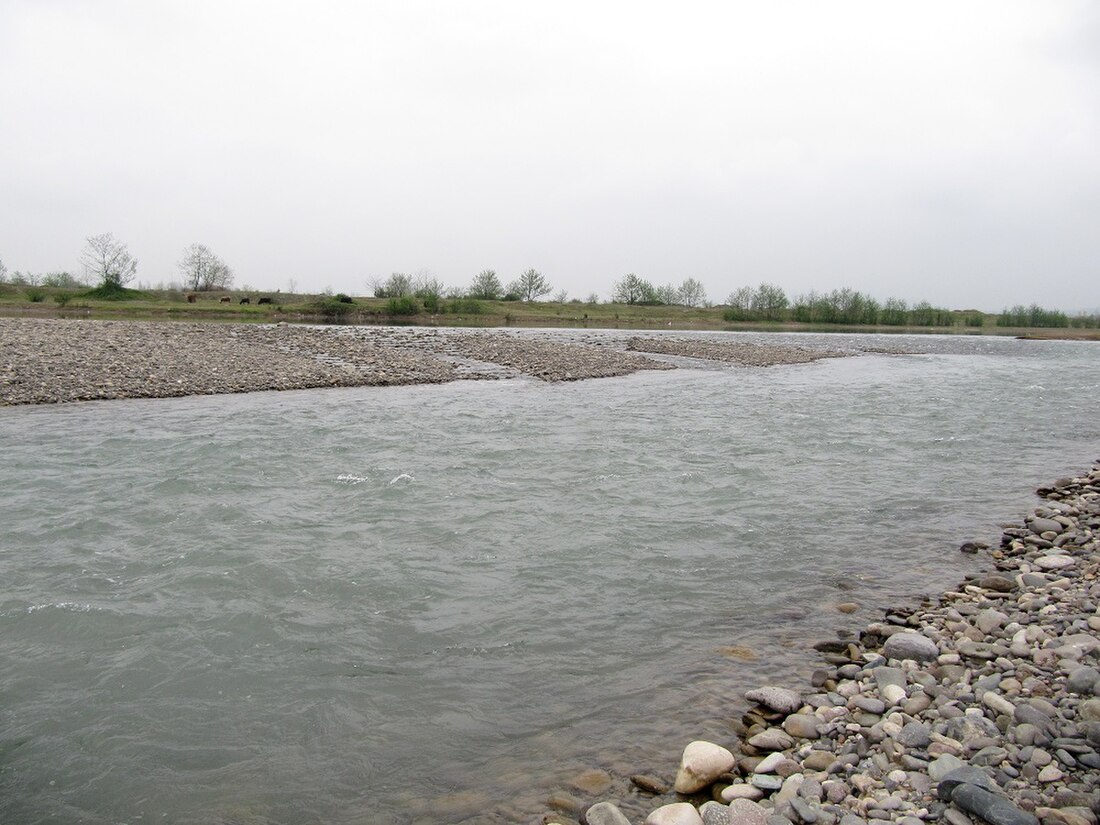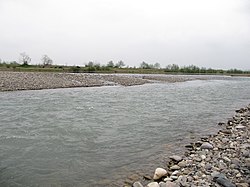Top Qs
Timeline
Chat
Perspective
Sefid-Rud
River in northwestern Iran From Wikipedia, the free encyclopedia
Remove ads
The Sepid-Rud (Persian: سفیدرود, lit. 'white river'; Gilaki: سپیده رود; also known as Sefid-Rud) is a river, approximately 670 kilometres (416 mi) long, rising in the Alborz mountain range of northwestern Iran and flowing generally northeast to empty into the Caspian Sea at Rasht.
Remove ads
Names
Other names and transcriptions include Sepīd-Rūd, Sefidrud, Sefidrood, Sepidrood, and Sepidrud. Above Manjil, "Long Red River".[1][2]
William Smith equated the river with the Amardus (Ancient Greek: Ἀμάρδος) or Mardus (Μάρδος) river of antiquity.[3][4]
The river is historically famous for its abundant fish, especially the Caspian trout, Salmo trutta caspius.[5]
Geography
Summarize
Perspective
The Sefid-Rud has cut a water gap through the Alborz mountain range, the Manjil gap,[6] capturing its two headwater tributaries, the Qizil Üzan and Shahrood rivers. It then widens the valley between the Talesh Hills and the main Alborz range. The gap provides a major route between Tehran and Gīlān Province with its Caspian lowlands.[6]
In the wide valley before the Sefid-Rud enters the Caspian Sea, a number of transportation and irrigation canals have been cut; the two biggest are the Khomam and the Now.[7]
Dam and reservoir
The Sefid-Rud was dammed in 1962 by the Shahbanu Farah Dam (later renamed Manjil Dam),[8] which created a 1.86 cubic kilometres (0.45 cu mi) reservoir and allowed the irrigation of an additional 2,380 km2 (919 sq mi).[8] The reservoir mediates some flooding and significantly increased rice production in the Sefid Rud delta.[9][10] The hydroelectric component of the dam generates 87,000 kilowatts.[8] The completion of the dam had a negative impact on the river's fisheries, through reduced stream flow (due to diversion), increased water temperature, and decreased food availability, especially for sturgeon but also for the Caspian trout.[11]

360° View of the Sefīd-Rūd, with bridge on left.
Remove ads
History

The river was known in antiquity as Mardos (Greek: Μαρδος; Latin: Mardus) and Amardos (Greek: Αμαρδος; Latin: Amardus).[2] In the Hellenistic period, the north side of the Sefid (then Mardus) was occupied by the Cadusii mountain tribe .[12]
David Rohl proposes identification of Sefid-Rud with the Biblical Pishon river.[citation needed]
Gallery
Notes
External links
Wikiwand - on
Seamless Wikipedia browsing. On steroids.
Remove ads




